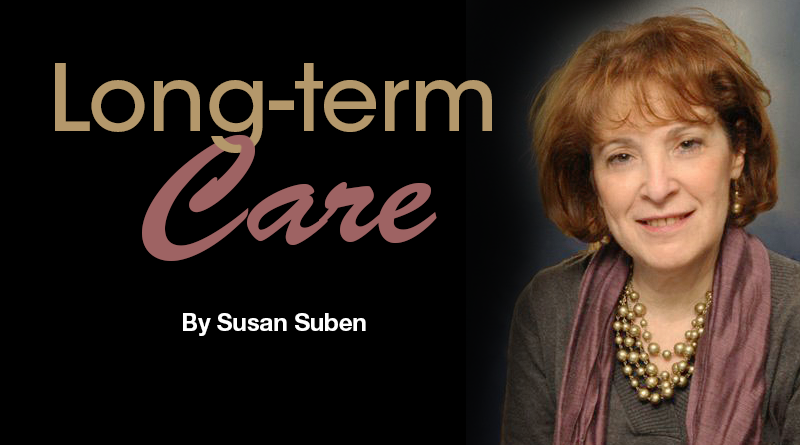Placement: The Time Could Come
By Susan Suben
Many of you assume the role of caregiver. This comes with a broad range of responsibilities: managing medications, talking to health care providers, helping with activities of daily living (ADLs) and handling chores, meals or bills.
Performing these tasks can help keep the person you are caring for in their home.
But what happens when these responsibilities become overwhelming and the safety and quality of life of the person you are caring for are questionable? It may be time to consider placement in a LTC facility or community-based program.
Placement is primarily contingent upon the disabled person’s health and the services they require. Housing and community-based program options can include continuing care residential community (CCRC), adult home, assisted living, nursing home and Alzheimer’s facility. Community-based care can be provided at an adult day care center or Programs for All Inclusive Care for the Elderly (PACE).
When gathering information about these options, tour the facility or program with these thoughts in mind:
• Location: Is it convenient?
• Affordability: Are there hidden fees?
• Appearance: Is the building clean? Smell fresh?
• Staff: Are they visible, knowledgeable and helpful?
• Dining room: Does the menu vary? Presentation?
• Activity program: Are the residents engaged?
• References: What are others saying?
Facilities and community-based programs are licensed and regulated differently and their licensure determines the types of services they can provide. Payment methods vary as well.
A CCRC provides a continuum of care allowing movement from one level of service to another. Individuals can initially move into their own apartment where they can receive home care for ADL, medication management and rehabilitation. Ancillary services, such as cleaning, laundry, communal meals and activities, can be added. As the individual’s health changes, they can move into the assisted living or nursing home section of the community, which allows them to receive more comprehensive health care. The cost for this type of setting can be expensive due to initiation and maintenance fees and should, therefore, be carefully reviewed. Payment method: Private pay and LTC insurance.
Assisted living facilities also allow an individual to move into their own apartment. Services are geared toward assistance with ADL and medication management. A person’s overall health should be stable. They must be able to feed themselves and be mobile. Wheelchairs and walkers are permitted. Laundry and housekeeping are provided as well as three meals per day. Activities and some nursing care are also included. The monthly fee can range from $4,500 to $8,000 in the region and, as more services are needed, additional charges can be expected. Payment method: Private pay, LTC insurance; Medicare does not pay and few facilities accept Medicaid.
In an adult home, an individual can have a private or shared room with or without a bath. The services are very similar to assisted living and the person’s health should be stable. Payment method: Same as assisted living but Medicaid is more readily accepted as well as VA benefits.
Assisted living facilities and adult homes can accept individuals with dementia depending upon the progression of the disease. Many assisted living facilities have secure dementia wings.
Facilities that are dedicated to Alzheimer’s/Dementia offer environments that diminish confusion, are secure, and have specially trained staff. Payment method: Private pay and LTC insurance. Medicare does not pay and few accept Medicaid.
Nursing homes provide skilled medical care. Individuals with/without dementia receive full nursing care under the supervision of a physician as well as rehabilitative and hospice care. Payment method: Private pay, LTC insurance, Medicaid and Medicare, up to 100 days.
If you are still able to take care of your loved at home, you can consider having them spend part of the day at an adult day care center. It is one of the most underutilized yet least expensive LTC service. These programs offer respite for the caregiver and a secure setting for attendees with meals and activities. Payment method: Private pay, LTC insurance and maybe Medicaid.
PACE helps people who would normally go into a nursing home stay in their home. PACE provides all of the social and medical needs of the participant. Transportation to the program, meals, activities and health care are included. Payment method: Medicare and Medicaid.
As caregivers, you need to be aware of and accept the fact that there could come a time when you are overwhelmed and cannot adequately handle the needs of the person you are caring for. If you are in that situation now, know that there are many resources in the community you can turn to. If you are at the beginning of your caregiver journey, plan for the future so everyone is prepared should the time come.
Susan Suben, MS, CSA, is president of Long Term Care Associates, Inc. and Elder Care Planning. She is a consultant for Canandaigua National Bank & Trust Company. She can be reached at 800-422-2655 or by email at susansuben@31greenbush.com.

